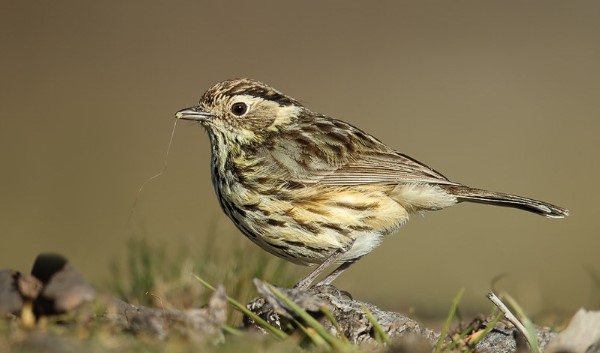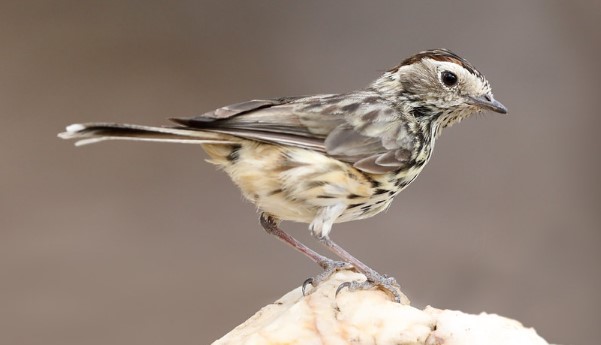Family: The speckled warbler (Pyrrholaemus sagittatus) belongs to the family Acanthizidae. In 1801, English physician and ornithologist John Latham described the speckled warbler for the first time.
Size: Speckled Warbler measure about 115-120 mm in length and weigh 13.5 grams.
Habitats: In their woodland habitat in southeastern Australia, they have dark-streaked plumage and a habit of freezing when disturbed. During the non-breeding season, individuals, couples, or small parties of these sprightly birds hop, foraging around and under bushes and trees without tail-cocking. Once disturbed, they often fly from branch to branch of a nearby tree or bush, uttering a scolding churring chatter as they go. They return to the ground once the disturbance has passed. It is not uncommon for Speckled Warblers to mix with Yellow-rumped Thornbills, Buff-rumped Thornbills, Eastern yellow robins, white-browed scrubwren, spotted pardalote, weebill and silver-eye in loose mixed feeding flocks.

Mimics: A speckled warbler mimics other species, such as the redthroat, by making a distinctive whirring sound as it flies.
Diet: As well as insects, Speckled Warblers eat larvae, other invertebrates, wasps and winged ants, moth, and butterfly larvae, and seeds found in leaf litter.
Alternative Names: Blood-tit, Speckled Jack, and Chocolate bird are also names for this warbler.
Male: The upper parts of the male are gray with broad black-brown stripes; the rump is fawn. There is a brown-black tail with a broad white tip on both feather vanes. Grey-brown crown and forehead with fine white streaks bordered by a black stripe, whereas eyebrows, lores, and feathers around the eyes are white. Its face and underparts are creams in color; its throat, breast, and flanks are boldly marked with black arrow-like streaks; and its undertail is tawny brown in color. There is a greyish-brown color to the eyes. The bill is grey-brown in color. The feet are blue-grey in color.
Female: As for a female, there is a hidden russet line above and behind the eye.
Immature: As adults, the head is duller and less streaked; the eyebrows are dull rufous and the black markings on the underparts are smaller and more tear-shaped.
Call: An alarming churring chatter is the call of the Speckled Warbler.
Song: Speckled Warblers have a soft but rich trilled and chirruping song that is often mimicked.

Nest & Breeds: The nesting and breeding seasons last from August to January. Speckled Warbler nests are domed shapes, hidden in tussocks of dried grasses and bark strips, lined with fur and feathers, and hidden in slight hollows in the ground. Birds can walk directly inside the nest because it has a side entrance.
In most territories, only two birds remain at the beginning of the breeding season after the young have dispersed from their territories from the previous year. There are occasionally two females accompanied by one male, however. Usually, one female nest before the other, and at this time, the male assists with feeding the nestlings and fledglings of the first female. The second female’s young are later cared for by him.
Eggs: There are three to four eggs; they are chocolate-red with a darker zone at one end; they are oval and measure about 19 x 15 mm. There is a possibility that the Black-eared Cuckoo may use speckled warblers as hosts, as their eggs are similar to those of the host bird. It has been reported that up to four Speckled Warblers are carrying food to one cuckoo nestling.
Distribution: The bird is found in eucalypt woodlands, gullies, and rocky ridges with open, shrubby understorey throughout the southeastern mainland, from Suttor Creek, Queensland, to Grampians, Victoria.
Status: Despite its relative abundance, the speckled warbler appears to be declining within its range. As a result of land clearance, invasive weeds, and predator pressure are introduced, as are overgrazing and salinization, which cause habitat fragmentation and degradation. In addition to drought, fires are also a threat.







